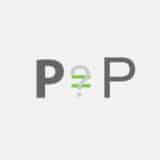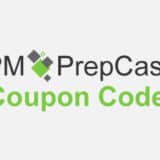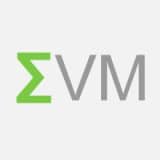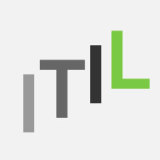PRINCE2 Foundation Certification Notes 6: Quality Theme

Important: The new PRINCE2® Foundation and Practitioner exams (PRINCE2® 2017) are available from 10 July 2017 (details of the changes here). Don’t worry, the changes are quite minor indeed as all the 7 principles, themes and processes remain the same. From now on until the end of 2017, candidates can take either the existing or updated English versions of the PRINCE2® exam. All PRINCE2® Foundation and Practitioner exams will be based on PRINCE2® 2017 from 1 January 2018. You can still seize the time to get certified based on the current version! Once you get PRINCE2® certified, your certification is still valid under PRINCE2® 2017 and onwards!
Introduction: In PRINCE2®, there are 7 Themes describing important aspects of project management that are vital to the success of the project. The Quality Theme is the third PRINCE2® Theme which is aimed at ensuring the project products would “fit for purpose”. The Quality Theme is primarily based on the PRINCE2® Principle of “Focus on Products”. The PRINCE2® Foundation Study Notes for the Quality Theme below details what are needed for the PRINCE2® Foundation Exam.
Article Highlights
PRINCE2® Theme: Quality
- The Quality Theme is about setting up a system to create and verify that the project will deliver products that are fit for purpose (i.e. meet the requirements) — so that the expected benefits can be realized.
- Quality is an important aspect of project management that must be addressed at the very beginning of the project in order to ensure the delivery of quality products.
- In PRINCE2®, the requirements and specifications (i.e. quality) of the product(s) must be clearly defined and approved (baselined) before actual development begins — subsequent changes must also be approved.
Quality Concepts
- Quality is the total amount of features or characteristics of a product for meeting expectations and satisfying needs.
- Quality Management is the coordinated activities to direct and control an organization on quality (e.g. defining quality, quality control, quality assurance, etc.).
- Quality Management System is the complete set of quality standards, procedures and responsibilities for an organization (including “site” — i.e. customer organization) for which the project needs to follow.
- Quality Planning is about defining the strategy (including quality criteria, quality methods and quality responsibilities) by which the products can meet the quality requirements.
- Quality Control focuses on the operational techniques and activities to inspect and test the product and looks for ways to improve quality.
- Quality Assurance is an independent review on quality management trying to ensure the quality activities are adequate (e.g. comply with organizational quality standards), responsible by Corporate or Programme Management. The role Quality Assurance is outside the project management team.
- vs Project Assurance — within the project management team for assuring the project is beneficial and conducted appropriately
- Quality Method is all the quality activities that are required to carry out during development, review and approval of the product
- In-process methods: quality is built into the product development processes
- Appraisal methods: check the quality of the product by testing and inspection
PRINCE2® Approach to Quality
- Quality Planning – to agree on the Quality expectations and acceptance criteria with the Project Board and communicate these with stakeholders to reach a common understanding of the quality requirements. Produces the following documents:
- Project Product Description Document
- the quality expectations of the customer need to be defined and agreed early in the ‘Starting up a Project’ process
- Acceptance Criteria must be well defined (measurable, individually realistic and prioritized)
- PPD also includes the purpose of the product, the composition, development skills, quality method, responsibilities and project level quality tolerances for the project
- created in ‘Starting up a Project’ process (becomes part of the Project Brief) and subsequently refined in the ‘Initiating a Project’ process
- Quality Management Strategy Document
- created in ‘Initiating a Project’ process
- defines the agreed strategy/system fof Quality for this project
- need to be approved by Project Board
- Product Descriptions Document for individual products
- includes the purpose, quality criteria, quality tolerances, quality skills required and quality responsibilities for the product
- Quality Register document
- as a daily of the quality management actions/events created during ‘Initiating a Project’ process and updated throughout the project
- Quality records: include test plan, defect statistics and metrics
- Quality activities and results
- Quality audits
- created by Project Support and approved by Project Manager
- as a daily of the quality management actions/events created during ‘Initiating a Project’ process and updated throughout the project
- Project Product Description Document
- Quality Control
- focuses on the operational techniques and activities as defined in the Quality Management Strategy
- carrying out the Quality methods defined in the Quality Management Strategy and Product Descriptions
- Maintaining Quality and Approval records
- Gaining acceptance and communicate Acceptance Record ( for the final approval of the project’s specialist product) to customer
- focuses on the operational techniques and activities as defined in the Quality Management Strategy
- Quality Responsibilities
- producer(s) — those who develops the products of the project
- reviewer(s) — those who checks the product against the Product Descriptions
- approver(s) — those who approves the product as “fit for the purpose” (reviewer and approver can be the same person)
- Quality Review Technique — Quality Inspection technique
- to assess the products against their agreed criteria as documented in Quality Planning documents — to inspect that the product is complete
- key stakeholders are involved to promote quality of the product
- Quality Review Meeting
- team members: chair, presenter, reviewer and administrator
- the product is marked as complete/conditionally complete/incomplete
- communiate results and coordinate follow-up actions
Quality Theme: Roles and Responsibilities
- Corporate or Programme Management: provides organizational Quality Management System and be responsible for Quality Assurance of the project
- Executive: approves the Project Product Description and Quality Management Strategy
- Senior User(s): provides Quality Expectations and Acceptance Criteria for the product of the project and participate in quality activities
- Senior Supplier(s): provide resources to perform Quality activities for supplier
- Project Manager: prepare the Project Product Description (in ‘Starting up a Project’ process), Product Descriptions and Quality Management Strategy (in ‘Initiating a Project’ process)
- Project Assurance: advises on Quality Management Strategy and review Product Descriptions to ensure project assurance on quality aspects
- Team Manager: produces the product according to the quality requirements
- Project Support: updates the Quality Register and Quality Records
(The PRINCE2® Quality Theme is similar to the Project Quality Management as described in the PMBOK® Guide for PMP Certification Exam dealing with the planning, executing and monitoring of the quality of the product/project as in the PMP Exam.)
Wish you PRINCE2® Foundation Exam success!


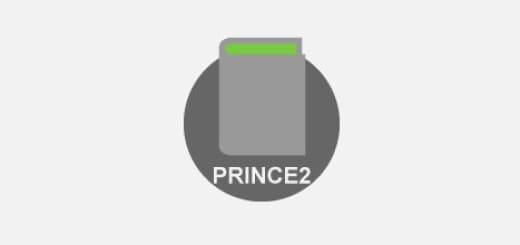

 Hi, my name is Edward Chung, PMP, PMI-ACP®, ITIL® Foundation. Like most of us, I am a working professional pursuing career advancements through Certifications. As I am having a full-time job and a family with 3 kids, I need to pursue professional certifications in the most effective way (i.e. with the least amount of time). I share my exam tips here in the hope of helping fellow Certification aspirants!
Hi, my name is Edward Chung, PMP, PMI-ACP®, ITIL® Foundation. Like most of us, I am a working professional pursuing career advancements through Certifications. As I am having a full-time job and a family with 3 kids, I need to pursue professional certifications in the most effective way (i.e. with the least amount of time). I share my exam tips here in the hope of helping fellow Certification aspirants!
